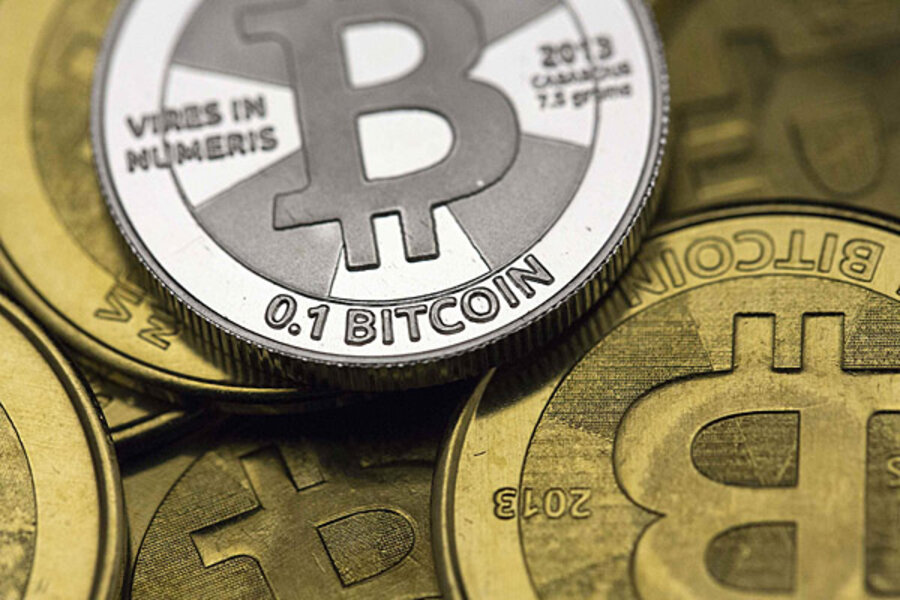MIT undergrads will each receive $100 in bitcoin
Loading...
Some colleges give students planners or bookmarks when they enter a new school year.
Massachusetts Institute of Technology, on the other hand, will give $100 in bitcoin to all incoming undergraduate students next fall.
The initiative, which was announced Tuesday in MIT's student newspaper The Tech, was the idea of a sophomore and graduate student with backgrounds in bitcoin. So far, they have raised more than $500,000 from alumni and other donors to fund what they are calling the MIT Bitcoin Project, and have the blessing of the school. Their hope is to create a bitcoin ecosystem on campus, in order to create a campus-wide case study of the nascent cryptocurrency.
“Giving students access to cryptocurrencies is analogous to providing them with Internet access at the dawn of the internet era,” says Jeremy Rubin, the sophomore electrical engineering and computer science major who is one of the founders of the Bitcoin Project, in a release. The other founder is Dan Elitzer, founder and president of the MIT Bitcoin Club and a first-year graduate business student at MIT's Sloan School of Business.
Their aim is both specific and purposefully ambiguous. After the bitcoins are distributed to the students, a variety of professors and researchers will be running studies watching how the MIT community uses the currency. One faculty supporter says this offers a way to peek into our likely data-filled future.
“I am supporting them because it is generally an awesome hack, and more specifically I am working to understand how our society can thrive in an age where everything is datafied and can be controlled by computer,” says Alex “Sandy” Pentland, director of the human dynamics laboratory at the MIT Media Lab, to The Tech. “While the specific properties of bitcoin have some real problems, getting everyone at MIT to start playing with bitcoin … will prompt the MIT community to begin thinking seriously about how we can live in an all-digital future.”
Other than those studying how the currency operates around campus, students are also free to use the currency however they please. To prepare, Mr. Rubin and Mr. Elitzer are hosting a bitcoin expo this weekend to begin further discussions on the project, and have gained the support of many other student organizations and faculty members. Over the summer, they will also be readying local merchants for bitcoin payments.
What’s the end goal of all this? Rubin told The Tech there are a variety of applications that could come out of this experiment. Off the top of his head, he imagines secure wallet storage, bitcoin-based bill splitting, and Web-based “microtipping,” being potential. But it also could extend to more technical innovations, such as network-based owning agreements.
This news comes at the tail end of a rough couple of months for the cryptocurrency. After its value skyrocketed to more than $1,000 per bitcoin in December, it quickly fell to about half that value and has largely stayed low this spring. This news was compounded by the temporary shutdown of two bitcoin exchanges, including Mt.Gox, which lost nearly $400 million in bitcoin due to a hack.
Both these students have backgrounds in bitcoin. Rubin worked on a bitcoin mining project called Tidbits (that is currently being investigated for its potential role in computer fraud by the state of New Jersey, though MIT and the Electronic Frontier Foundation are on the students’ side). Elitzer first became interested in the currency while working at a nonprofit, and subsequently started MIT’s Bitcoin Club.
There is still no word on how they will be distributing the bitcoin, and there are many more logistical details to be worked out. But for now, the students say, its enough to get people thinking about the possibilities.
“We decided to announce this project now to give students lead time,” says Elitzer. “We want to issue a challenge to some of the brightest technical minds of a generation: ‘When you step onto campus this fall, all of your classmates are going to have access to bitcoin; what are you going to build to give them interesting ways to use it?’ ”






